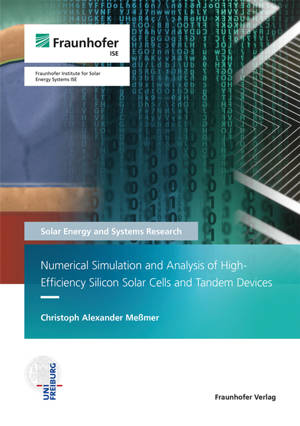
- Afhalen na 1 uur in een winkel met voorraad
- Gratis thuislevering in België vanaf € 30
- Ruim aanbod met 7 miljoen producten
- Afhalen na 1 uur in een winkel met voorraad
- Gratis thuislevering in België vanaf € 30
- Ruim aanbod met 7 miljoen producten
Numerical Simulation and Analysis of High-Efficiency Silicon Solar Cells and Tandem Devices.
Christoph Alexander Meßmer
€ 85,95
+ 171 punten
Omschrijving
The transformation of the global energy system towards renewable energies requires high-efficiency and low-cost photovoltaic devices. Silicon solar cells based on so-called passivating contact systems and tandem devices are deemed to be the next major evolution with apparent successes in both laboratory and industry. However, new challenges arise like non-trivial charge carrier (tunnelling) transport across multiple interfaces and additional parasitic absorption losses. This thesis provides a comprehensive study of state-of-the-art silicon solar cells and their integration as bottom cells in novel perovskite-silicon tandem devices by means of numerical simulation. It comprises detailed opto-electrical device simulation based on sophisticated physical models to analyze the most relevant solar cell concepts featuring passivating contacts, including tunnel-oxide passivating contacts (TOPCon), silicon heterojunctions (SHJ) as well as alternative contact layers like metal oxides. In close collaboration with experimental work done at Fraunhofer ISE, this work addresses current experimental challenges and technological restrictions and elaborates on the potential of future improvements.
Specificaties
Betrokkenen
- Auteur(s):
- Uitgeverij:
Inhoud
- Aantal bladzijden:
- 232
- Taal:
- Engels
- Reeks:
Eigenschappen
- Productcode (EAN):
- 9783839618608
- Uitvoering:
- Paperback
- Afmetingen:
- 156 mm x 13 mm
- Gewicht:
- 348 g

Alleen bij Standaard Boekhandel
+ 171 punten op je klantenkaart van Standaard Boekhandel
Beoordelingen
We publiceren alleen reviews die voldoen aan de voorwaarden voor reviews. Bekijk onze voorwaarden voor reviews.









